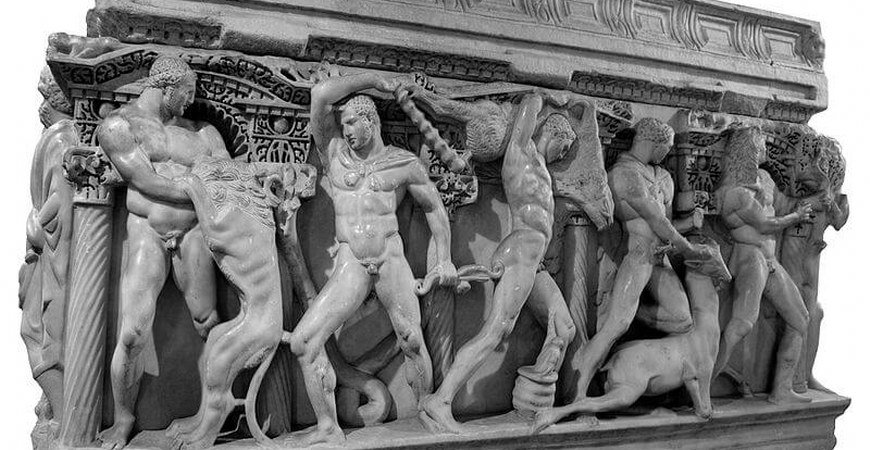
The Heracles Sarcophagus In Konya Turkey – Chapter 2
The Heracles Sarcophagus In Konya Turkey – Chapter 2,
The sarcophagus was 2,5 m. long, 1.30 m. wide, and 1.18 m. high. Its four faces were decorated with tall bas-relief figures so finely and skilfully carved that they might have been made separately and nailed on afterward. On the cover were the carved figures of a man and woman lying down. The sarcophagus must have belonged to an important man of state. Inside were found two skeletons which were sent to the Faculty of Languages and History for examination, while the sarcophagus itself was studied in Konya. It was of the Sidamara type made in Anatolia. Sidamara was located on the site of the present village of Anbarli south of Konya and a sarcophagus was found there which is at present in Istanbul Archaeological Museum. The bas-reliefs on the sides of this newly found sarcophagus depicted the God of Force and the twelve labors of Heracles. Brought to life in marble was the killing of the Nemean lion and the nine-headed snake the wild boar, the catching of the stage which ran like the wind, the destruction of the birds which flung their quills like arrows, the removal of the magic belts of the Amazons, and the rest of the twelve labours. The successful Heracles has convinced everyone of his immortal strength. He has a cudgel in his hand and a lion skin on his shoulders. In most of the depictions, his muscles are strained and his eyes flash as if he were going to leap off the sarcophagus.
At the head of the sarcophagus is a columned temple niche in front of which is a clothed figure sitting on a chair. Standing opposite him is a tall beautiful woman. It is clear that they are whom the sarcophagus was made for. Behind the man is standing another person, who could be a palace advisor or a priest. No detail of the compositions is missing. At intervals, columns and sacred animals decorate the sarcophagus.
Historians say that the region where the sarcophagus was found was the site of the ancient Roman city of Tiberiopolis, and other finds from the area confirm this. The latest studies of the sarcophagus have determined that it was made in the Roman period around 260 AD. There is no writing to indicate for whom it was made, however. One has to be content with the fact that it is a masterpiece of ancient art.